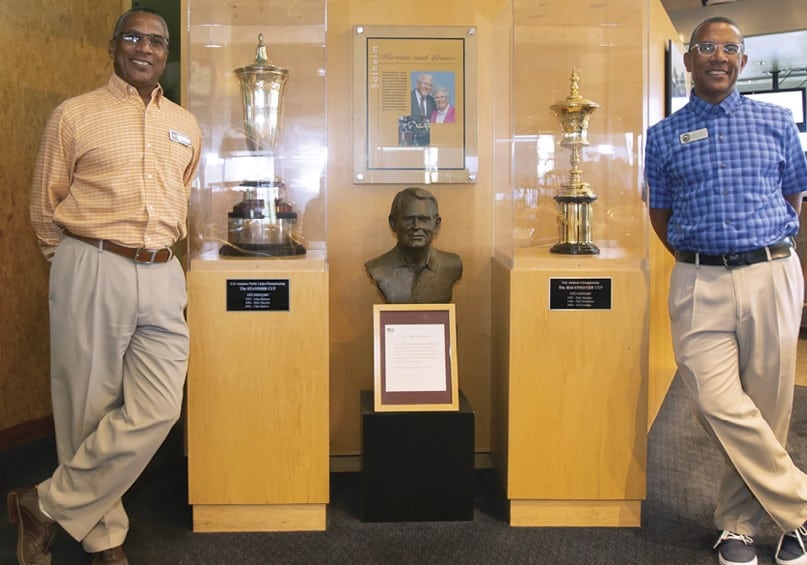How do you plan for the future when the ground is shifting beneath your feet? When every day seems to bring a new forecast about the health of our fellow citizens, our economy and our environment?
The answer is simple for some. They’ll simply turn away from long-term opportunities and challenges while taking refuge in what seems slightly less murky: tomorrow, next week or next month.
That approach may feel safe, but it’s not what your board or your ownership expect. They hired you to be the long-term caretaker of their clubs and facilities and the guardian of their relationships with loyal members and customers. They expect someone in your position to have a plan, not only for getting through our current mess, but also for positioning the business for success well into the future.
So, what are those kinds of leaders doing to prepare? Our observations suggest five things at the top of their lists.
1. They’re looking ahead … way ahead.
Some economists predict that the U.S. economy will not return to pre-pandemic levels until 2023. That means visionary facility managers and club leaders of every description should be looking not only around the corner, but also over the horizon to get ready for a post-pandemic world. Those leaders see things differently.
- They see opportunity rising out of increasing golfer participation, as families and friends view golf courses as a primary platform for socialization and outdoor exercise.
- They see increasing outdoor dining options, where picnicking, farm baskets and patio-dining alternatives are meeting the need for socially distanced outings.
- With high unemployment levels, they see opportunities to upgrade their staff’s performance and service levels.
2. They’re taking care of their people.
In several recent national polls, including Gallup and Harris, a strong majority of employees say they feel their employer is looking out for their best interests. (Similarly, a survey of private club members in the U.S. and Canada conducted by our firm found that members feel highly positive about the performance of their clubs throughout the coronavirus crisis.)
It’s easy to show your team members that you care for their well-being and that you respect their dedication during difficult times. You can write a personal note of thanks and invite them into your office for a conversation and remind them of their importance. You can encourage them to bring their family to the course as part of “family day.”
Your best people are your most important asset. You’ll need them prepared and energized to lead your business into the future.
3. They’re aware of shifting market conditions.
External influences are changing our views on leisure activities and disposable income. It’s critical that club leaders understand the unbiased and unvarnished trends influencing golf.
In the GGA Partners’ survey, roughly four in five members reported either an increase in importance or no change in the club’s importance in their lives. However, survey respondents were not optimistic about their club’s financial position. Seventy-one percent expect a decline in the financial health of their club. Fifty percent cited current economic conditions and 42% said a decline in member spending would lead to the decline, which 20% predicted would be “significant.”
A surge in golfer participation that many courses have enjoyed in the past several months should not be construed as a guarantee of future success. When there are few other distractions, golf is proving a popular, socially distanced alternative entertainment. But leaders planning for the long term are taking nothing for granted and shoring up service levels to make sure they continue to deliver unquestioned value.
4. They’re realistic and preemptive.
Hopefully, an approved coronavirus vaccine will be rolled out soon. If an approved vaccine is delayed, however, progressive leaders have contingency plans. For golf superintendents, club managers and other leaders, realistic planning requires careful review of revenue capabilities and overhead arising from on-going operational costs.
Here are some steps to take in preparing for 2021:
- Review your staffing model and search for efficiencies. Now may be time to update and refine your organization of management, taking into account changing attitudes about work/life balance.
- Re-think your plan of work model. Perhaps mowing in the afternoons opens up desirable morning tee times and makes your work on less crowded fairways more efficient. Likewise, evaluate work such as tree trimming and bulk clean-up and consider outsourcing or moving such projects to the off-season.
- Monitor inventory levels. There is no need for a full fuel storage tank during the off-season, for example. Procure what you will use more efficiently.
5. They’re planning on success.
Imagine your facility on its best day ever. You and your team make those days happen when you dream big and work toward a future that delivers the best of your talents and imagination. Don’t be shy. You can be realistic while also making sure your plans include a few “shoot the moon” and BHAG (big, hairy, audacious goals) aspirations.
Dramatic and unpredictable times like those we’re living in create multiple challenges that can seem daunting. But they also bring out the best in those who plan for success.
This article was authored by Henry DeLozier for Golf Course Industry magazine. Henry returned GCI’s Beyond the Page podcast to discuss long-range planning in a conversation with Golf Course Industry managing editor Matt LaWell. Listen to the playback below and visit the GCI website to subscribe to the Beyond the Page podcast.
(16-minute listen, 02:30-18:50)












